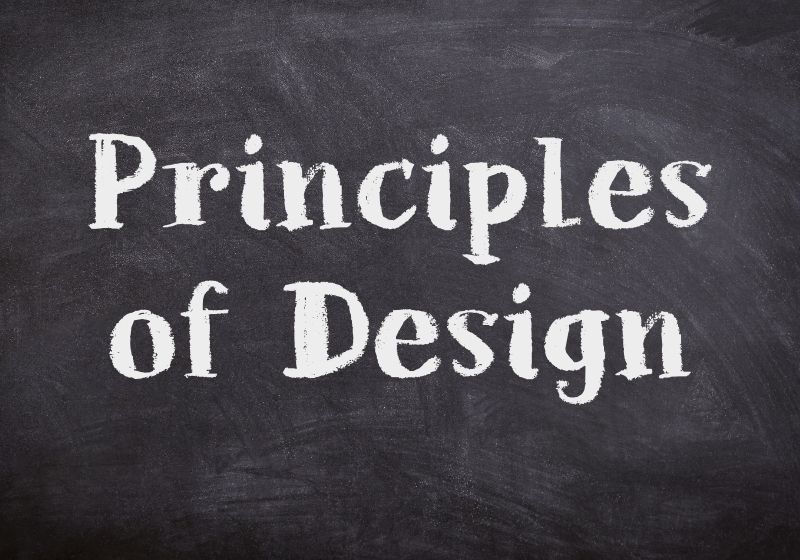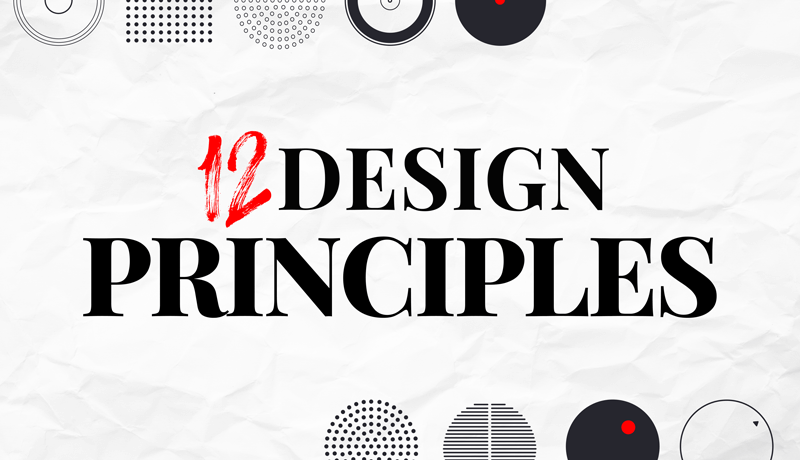Principles of Design are the regulations a designer must adhere to create an effective and attractive design.
The following are the twelve essential principles of design: contrast, balance, emphasis, proportion, hierarchy, repetition, rhythm, pattern, white space, movement, variety, and unity. These ideas work together to produce aesthetically appealing and efficient designs that make sense to people.
Principles of Design

What Are Principles of Design
Unlike art, design has a goal. So, the picture’s focal point, which is visible aesthetically, is a salient feature of this functionality.
Perhaps you’re wondering, “But wait! Isn’t creativity essential to design?”
If you’re a business or designer just getting started, you may want to throw caution and mix the first five typefaces and hues that appeal to you, conceiving something unusual. But, instead, you’ll almost certainly produce a confused, unfinished, or simply unappealing design.
Graphic design, like any other field, follows set standards that operate below the surface to provide a solid and balanced product. If the design is out of balance, it will be flimsy and ineffective.
Read the rest of this article and learn more about the twelve basic design principles. Understanding these ideas and how to employ them will set your next project apart.
What Are the 12 Principles of Design
The following are the fundamental principles of design:
- Emphasis
- Balance and Alignment
- Contrast
- Repetition
- Proportion
- Movement
- White Space
- Hierarchy
- Rhythm
- Pattern
- Variety
- Unity
Emphasis
The emphasis of a design is the first of the seven design principles, meaning the focal point and order of importance for each component in a design.
For example, suppose you’re making a poster for a big show. It’s important to consider what the first piece of information your audience needs to know is.
Is it the band? Perhaps it’s a concert venue?
What about the date and how much it’ll cost you to go?
Balance & Alignment
Remember that each element on a page has a weight. The weight of an object can come from color, size, or texture.
You can’t stuff all your heavy elements in one area of your composition; otherwise, you’ll lose balance. Your audience will feel their gaze sliding off the screen if there isn’t enough balance.
A symmetrical design is one in which the elements are equally weighted and lined up on either side of a center line.
On the other hand, an asymmetrical design places different weights (for example, as opposed to one big element with several smaller elements) to produce a composition that is not even but has balance.
Symmetrical designs are always lovely, if not occasionally dull. Asymmetrical shapes are more daring and can provide genuine visual appeal (more on that later!) to your picture.
Contrast
The term “pop” describes a design’s ability to “pop.” It pulls away from the page and stays in your memory. The presence of contrast establishes distance and distinction between components within your design.
To make the subject element of the design readable, your backdrop should be significantly distinct from the color of your elements.
If you’re designing a type, knowing how to use contrast is critical since it determines the weight and size of your type. But, how will your audience know what’s most vital if everything is bold?
You’ll find that most successful designs only use one or two typefaces. It is because two strong fonts (or even one strong typeface in different weights) can effectively create contrast. Unfortunately, as you add typefaces to your design, it becomes diluted and confused.
Repetition
You’ll soon discover repeating things is necessary if you stick to two powerful typefaces or three strong colors. That’s all right! Repetition often helps with unifying and strengthening a design.
Repetition can be important in other mediums, as well.
The principles are not hard rules. But understanding what’s inside the box will give you more liberty to think outside the box.
Look at Picasso, for example. In his earlier works, you’ll see how skilled he was with realism. His works of art were of realism before he went outside the box and explored cubism and abstract painting. The key is skill mastery and knowledge of the principles.


